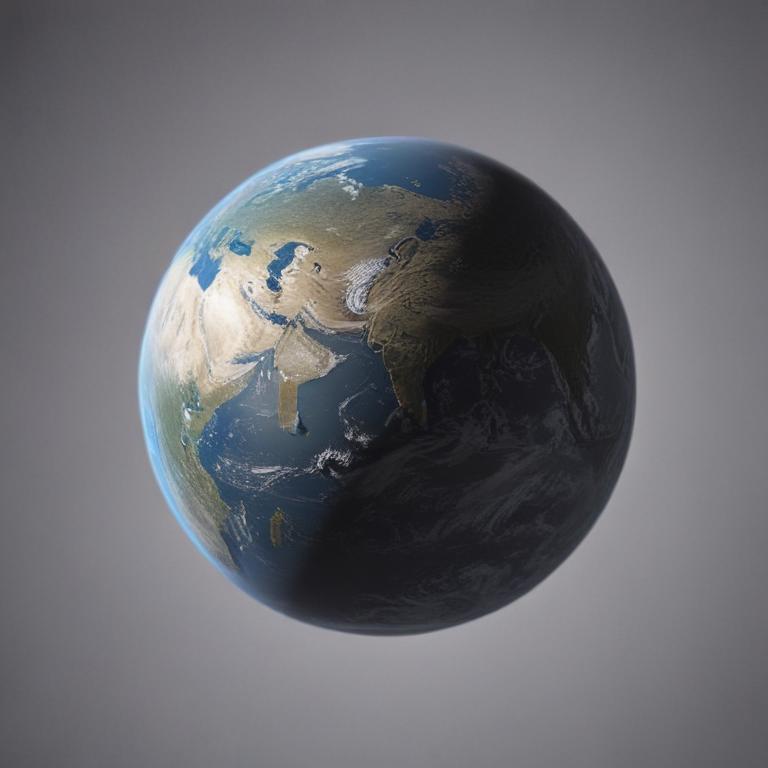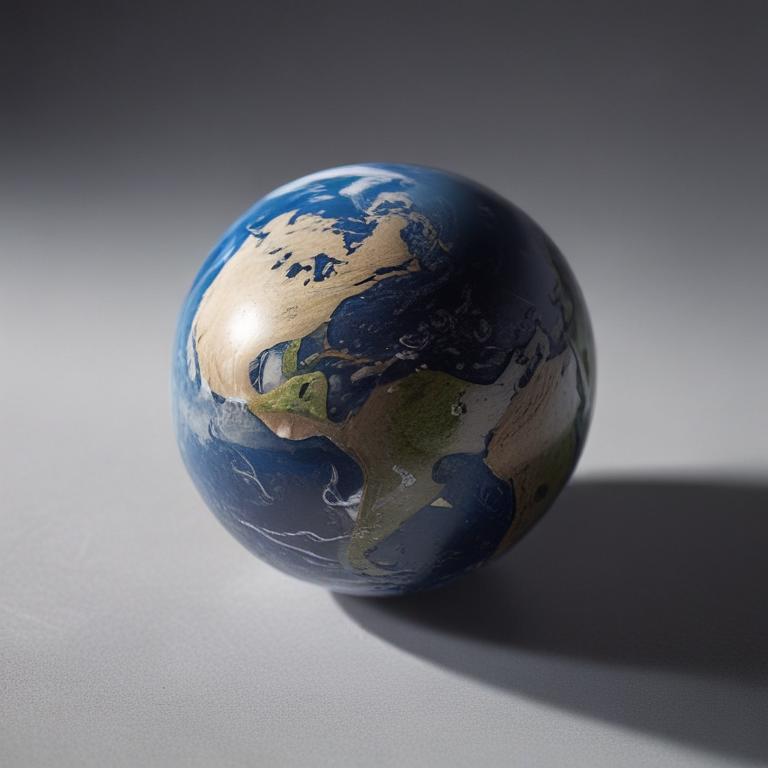发音 (Pronunciation):
IPA: /ˈplænɪt/
中文近似: 普莱尼特
中文意思与词性 (Meanings & Part of Speech):
- 行星(指围绕恒星运行、具有一定质量的天体,如地球、火星等) (n.)
- (引申)重大人物、影响力中心 ((罕见)n.)
例句 (Examples):
1. Earth is the third planet from the Sun.
(地球是太阳系中距离太阳第三近的行星。)
2. He was once the planet around which the whole company revolved.
(他曾是整个公司运转的核心人物。)
用法提示 (Usage Tip):
“planet”通常指天文学意义上的行星,不要与“star”(恒星)混淆。此外,太阳和月亮不是行星。
更多关于 "planet" (More about "planet")
单词来源 (Etymology)
“planet”源自古希腊语“planētēs”,意为“漫游者、游动的星体”,因古人观测到行星在天空中的运动和恒星不同。
词根词缀解析 (Root & Affix Analysis)
这是一个基础词,planet整个单词意为“游动的天体”。词根“plan-”有“漫游、移动”之意,和plane(平面、飞机)有同源关系。
“planet”的字母与词根个性化解读
字母象形/引申义 (个性化参考)
- 字母 'p' 的象形或引申含义可能包括: 手/脚 (P=F); 手掌 -> 平; 棒子 (P=B); 音变: P=B=M=F=V。
- 字母 'l' 的象形或引申含义可能包括: 拉长, 长 (line); 舌头 -> 说 (language); 细, 少; 音变: L=M=N=R。
- 字母 'a' 的象形或引申含义可能包括: 牛角 (象形: 牛头, 力量, 能力); 下面宽上面尖 (形状) -> 延伸, 远处, 高处, 方向, 指示。
- 字母 'n' 的象形或引申含义可能包括: 水 (M=N); 鼻音 (nose); 突出/生长/新生; 门 -> 否定 (no, not); 连接; 音变: N=M=L=R。
- 字母 'e' 的象形或引申含义可能包括: 眼睛 (窗户符号引申); 向外 (ex-变体); 元音互换: A=E=I=O=U=W=Y。
- 字母 't' 的象形或引申含义可能包括: 顶端 -> 记号/标志; 手杖 -> 抓 -> 手 -> 伸展 -> 指示代词; 支撑 -> 站立; 三叉 -> Tr转换/转; 分叉; 音变: T=D=S=TH。
学习提示:以上针对单词 planet 的字母和词根解读,主要基于提供的特定象形及词根资料。这些提示旨在启发联想,而非绝对定论。更通用的记忆规则和原则请参考首页。英语词源复杂多变,实际应用中请结合更全面的词源词典和语言学知识进行深入学习。
常用词组 (Common Phrases)
- dwarf planet: 矮行星
- planet Earth: 地球(我们的行星)
其他语言 (Other Languages)
- 德语: Planet
- 法语: planète
字母整体创意联想
“planet”单词像一个拉长的椭圆形,首字母p像行星的轨道支架,中间的a和e像在宇宙中围绕转动的天体,t像一枚探测火箭,把人们送往行星探索。
逐字母创意解读
中文谐音助记
“planet”可谐音记为“爬来呢它”,想象行星在天上慢慢爬行、运动。
相关电影/名言
"That’s no moon. It’s a space station. But it sure looks like a planet."
(那不是月亮。那是空间站。但它看起来的确像一颗行星。)
- 《星球大战:新希望》(1977)
趣味知识/故事
2006年,冥王星被国际天文学联合会重新分类为“矮行星”,不再被正式列入太阳系九大行星,这在全球范围内引起了广泛讨论,许多人为“失去”一个行星而感到遗憾。
拓展信息
行星一词在天文学中指的是围绕恒星运行的球形天体,必须具有足够质量以自身重力维持球形,并能够清除其轨道附近的小天体。
在日常英语中,“planet”也常用于比喻某个重要中心或核心。例如:He was the planet around which the company revolved。
不要把planet与“satellite”(卫星)和“star”(恒星)混淆,卫星是绕行星转的天体,恒星自身发光发热,比如太阳。
网络参考 (More about "planet" from the Web)
Planet - Wikipedia
The eight planets of the Solar System with size to scale (up to down, left to right): Saturn, Jupiter, Uranus, Neptune (outer planets), Earth, Venus, Mars, and Mercury (inner planets). A planet is a large, rounded astronomical body that is generally required to be in orbit around a star, stellar remnant, or brown dwarf, and is not one itself. [1] The Solar System has eight planets by the most ...
About the Planets - Science@NASA
Learn about the eight planets and five dwarf planets in our solar system, their sizes, locations, temperatures, and features. Explore the facts, images, and stories of each planet and dwarf planet with NASA.
The Nine Planets of The Solar System | Eight Planets Without Pluto
The Nine Planets is an encyclopedic overview with facts and information about mythology and current scientific knowledge of the planets, moons, and other objects in our solar system and beyond.
更多图片 (planet More Images)

